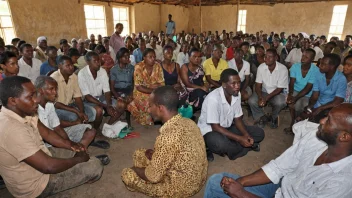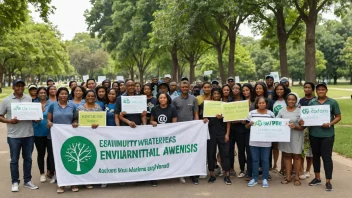Advocacy groups play a vital role in addressing community issues, providing a platform for voices that often go unheard. However, the approach to advocacy can vary significantly, with two prominent types being grassroots advocacy groups and formal advocacy organizations. This article will explore the strengths and weaknesses of each, providing insights into their operational methods, impact, and effectiveness in fostering social change.
Understanding Grassroots Advocacy Groups
Grassroots advocacy groups typically emerge from the community level, driven by local individuals who are passionate about specific issues. These groups often focus on mobilizing community members to engage in activism and raise awareness about particular causes.
Pros of Grassroots Advocacy Groups
- Community Engagement: Grassroots groups foster a sense of community ownership and involvement, as they are often composed of local residents who have firsthand experience with the issues they address.
- Agility: These groups can quickly adapt to changing circumstances and community needs, allowing for responsive action and activism.
- Authenticity: Grassroots efforts are often viewed as more genuine and relatable, as they stem directly from the community rather than a larger, potentially disconnected organization.
Cons of Grassroots Advocacy Groups
- Resource Limitations: Many grassroots organizations operate with limited funding and resources, which can hinder their ability to scale their efforts or sustain long-term initiatives.
- Lack of Structure: The informal nature of grassroots groups can lead to challenges in organization and strategy, sometimes resulting in fragmented efforts.
- Limited Reach: Grassroots initiatives might struggle to gain visibility beyond their local communities, which can limit their overall impact.
Understanding Formal Advocacy Organizations
In contrast, formal advocacy organizations are typically structured entities with established leadership, funding sources, and strategic plans. These organizations may operate at local, national, or international levels and often have access to more resources.
Pros of Formal Advocacy Organizations
- Resource Availability: Formal organizations usually have more financial backing and resources, enabling them to implement larger-scale initiatives and campaigns.
- Expertise and Training: These organizations often employ professionals who are trained in advocacy, policy analysis, and community organizing, bringing a level of expertise to their efforts.
- Broader Reach: With established networks and partnerships, formal advocacy organizations can amplify their messages and influence policy at multiple levels.
Cons of Formal Advocacy Organizations
- Disconnection from Community: Formal organizations may sometimes become disconnected from the very communities they seek to serve, leading to initiatives that do not fully address local needs.
- Bureaucracy: The structured nature of formal organizations can lead to bureaucratic red tape, slowing down decision-making and responsiveness.
- Potential for Mission Drift: As organizations grow, there is a risk of losing sight of their original mission in favor of broader, less focused goals.
Key Differences Between Grassroots and Formal Advocacy Groups
The differences between grassroots and formal advocacy groups extend beyond structure and resources. Understanding these distinctions is crucial for individuals seeking to engage in advocacy work.
Community Connection vs. Institutional Authority
Grassroots groups thrive on their deep connection to the community, often embodying the voices of those directly affected by the issues they champion. Conversely, formal organizations may wield institutional authority that can be beneficial in negotiating policy changes but may lack the grassroots authenticity that inspires community involvement.
Flexibility vs. Stability
Grassroots groups can quickly pivot in response to community needs, allowing them to remain relevant and effective. On the other hand, formal organizations offer stability and the ability to sustain long-term initiatives, but this can come at the cost of flexibility.
Local Impact vs. Global Reach
Grassroots organizations typically focus on local issues, allowing them to create significant impact within their communities. In contrast, formal advocacy organizations often have the capability to address global issues, leading to broader awareness and action.
Conclusion
Both grassroots and formal advocacy groups play essential roles in fostering social change and addressing community issues. Grassroots groups excel in community engagement and authenticity, while formal organizations bring resources and expertise to the table. The choice between the two approaches depends on the specific goals of the advocacy efforts and the context in which they operate. Ultimately, a collaborative approach that harnesses the strengths of both grassroots and formal advocacy can create a more powerful and effective movement for change.






